As users rely on File Explorer to access folders and manage storage, sudden issues can cause major disruptions. One error that many people face is the “Explorer.exe has stopped working” message. This error can appear without warning and make your desktop or file windows disappear. As a result, it ultimately disturbs both your work and leads to confusion and system lag on your side.
This problem can happen for several reasons, including old driver versions and damaged files. Fortunately, several effortless methods are available that help you resolve this disturbing issue without hassle. Thus, this article explains all the possible causes, followed by multiple stepwise fixes to help you restore smooth performance.
Table of Contents
-
- Method 1. Update or Roll Back Graphics Drivers
- Method 2. Run DISM + SFC in Admin Command Prompt
- Method 3. Disable Thumbnails
- Method 4. Run a CHKDSK Scan
- Method 5. Use the Windows Memory Diagnostic Tool
- Method 6. Delete File Explorer History
- Method 7. Use Command Prompt to Restart Explorer.exe
- Method 8. Boot Into Safe Mode to Check Startup Issues
Part 1. Why Does Explorer.exe Stop Working on Your Computer?
Before you apply any solution, it's essential to know why the error appears on your system. Therefore, let's dive into the most common reasons that can cause the "exe has stopped working” issue:
- System Files: Windows depends on healthy system files to perform tasks, including opening folders and launching File Explorer. In case these files are broken or missing, the system becomes unstable and ultimately crashes during simple actions.
- Graphics Drivers: They basically help your screen display everything, including your desktop and other windows. When it’s outdated, a visual task can fail and lead to loading or freezing problems on your system.
- Windows Updates: Some system updates may not be installed properly or might contain bugs that break File Explorer functions. As a result, it ultimately leads you to background conflicts and prevents Windows from launching folders or desktop elements correctly.
- Settings Issues: It is also possible that alterations in folder options or thumbnail previews can affect how Explorer loads and displays content. Hence, wrong settings can overload the system or slow it down when opening or searching for files.
- Malware Attacks: Such programs can damage important Windows files or interrupt how normal processes run in the background. Once infected, the system can behave strangely, including errors while trying to use File Explorer.
You can’t miss: Windows 10 Explorer Keeps Crashing? 10 Workable Fixes!
Part 2. 8 Complete Fixes for the Explorer.exe Stopped Working
Upon knowing the causes behind the Explorer.exe stopped working error, this section covers the top 8 solutions to help you restore normal system performance:
Method 1. Update or Roll Back Graphics Drivers
The first fix to resolve this problem is to update the graphics or display drivers on your PC. As we know, these drivers help display things, including the folder, the desktop, and File Explorer. In case they become outdated, your system ultimately crashes or shows the “Windows exe has stopped working” error. So, follow the quick steps to find out how you can update these drivers without hassle:
Step 1. As you access the “Device Manager” on your PC, click the “Display Adaptors” and right-click your preferred driver from the expanded list. Afterward, opt for the “Update Driver” option from the menu to move further.
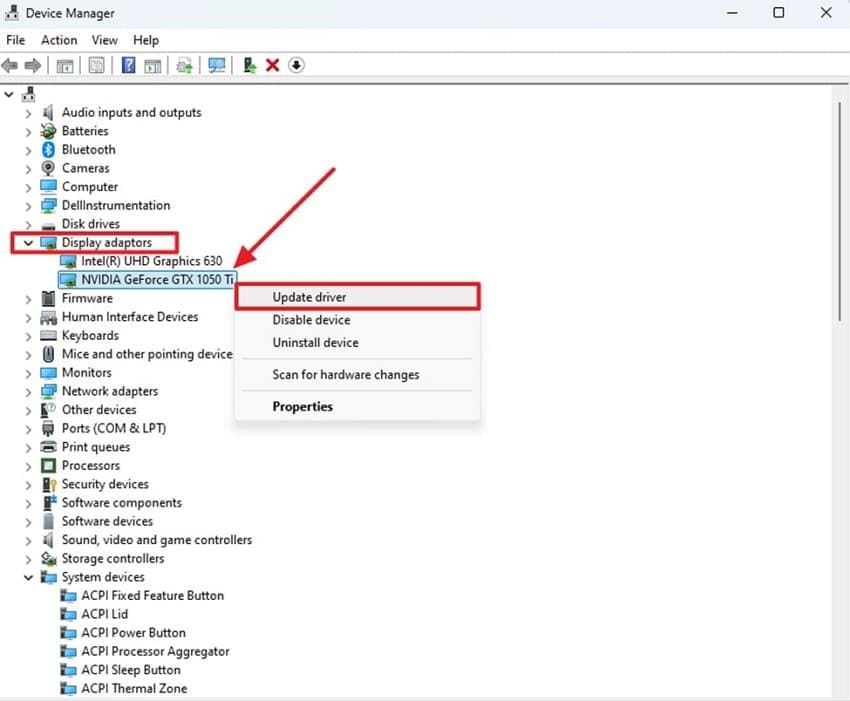
Step 2. Upon seeing a new display, choose the “Search Automatically for Drivers” option to update it and restart your device afterward.
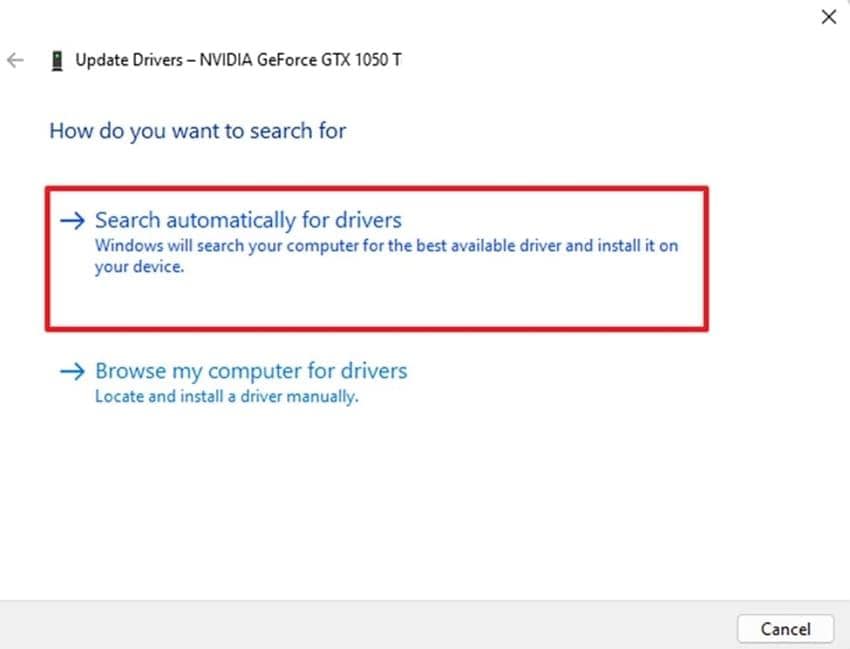
Method 2. Run DISM + SFC in Admin Command Prompt
In addition to the above, running the DISM and SFC commands can help find and repair damaged system files automatically. These native tools basically fix hidden issues that cause errors like the desktop window manager has stopped working on Windows. They scan the core files and replace the damaged ones with healthy versions. Anyhow, adhere to the guide to learn how to run both commands to address this problem:
Step 1. Initially, click the “Search Bar” in the taskbar and type “Command Prompt” to choose the “Run as Administrator” option.
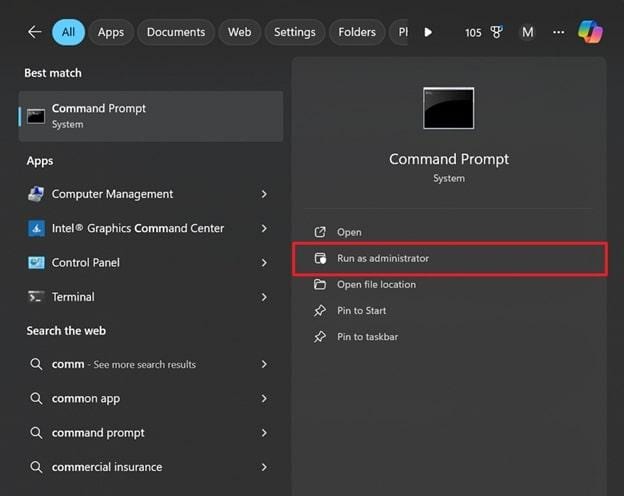
Step 2. Subsequently, you need to type the “sfc/scannow” command and hit the “Enter” key.
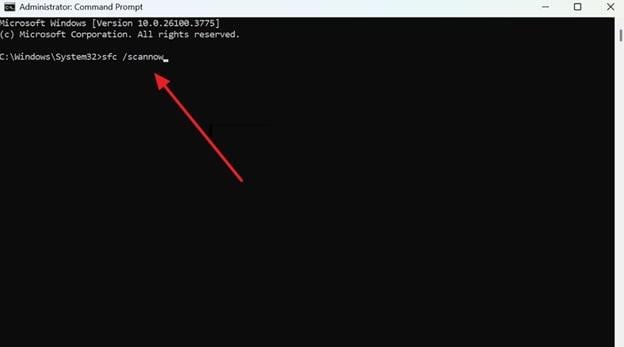
Step 3. Afterward, insert the “DISM.exe /Online /Cleanup-Image / Restorehealth” command and press the “Enter" key. Upon completing the scanning task, restart your PC, and your problem will be resolved.
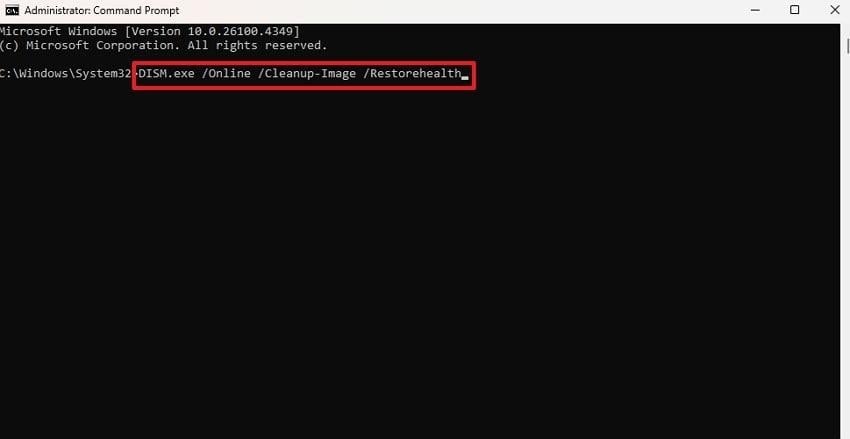
Method 3. Disable Thumbnails
Thumbnails show tiny previews of images and documents in folders instead of plain text. Many times, these previews fail to load correctly and cause errors like Explorer.exe has stopped working on your computer. At this point, you need to turn it off to reduce loading pressure and stop the File Explorer from crashing during folder access. Thus, let's dive below and turn off thumbnail preview on your PC:
Step 1. Start by navigating to the “File Explorer” folder and pressing the “Three Dots” to choose the “Options” feature.
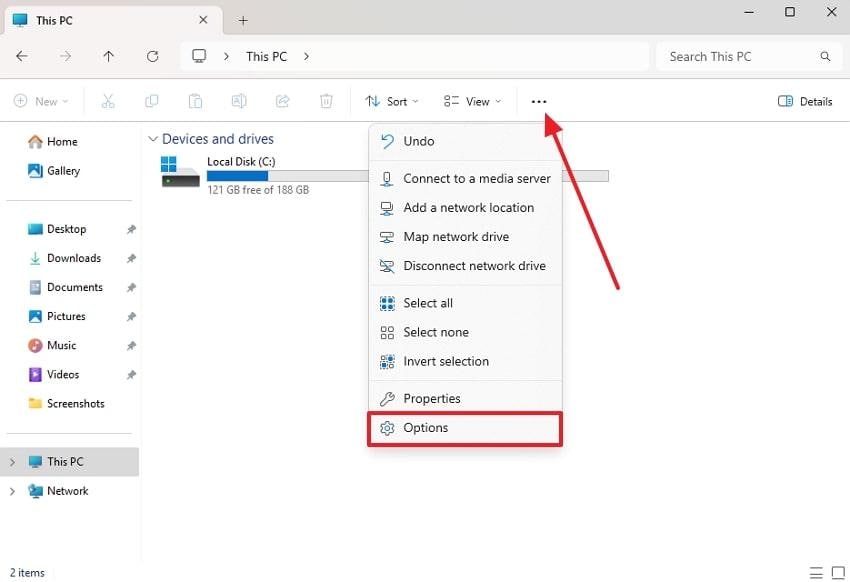
Step 2. When you access the properties panel, head to the “View” tab and enable the “Always Show Icon, Never Thumbnails” feature, and hit the “OK” button.
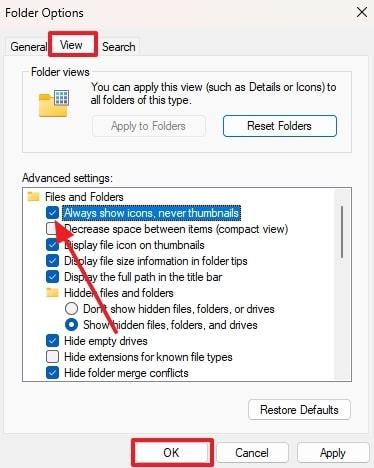
Method 4. Run a CHKDSK Scan
Another solution to resolve the “exe has stopped working” problem is to run the CHKDSK command. It actually scans your hard drive for errors that can affect file loading and performance. This tool also repairs drive problems to keep your files safe and your system running well. To perform this task, go through the detailed guide and improve speed and reduce crashes when opening folders or saving files:
Step 1. Launch the “Command Prompt” tool by opting for the “Run as Administrator” option.
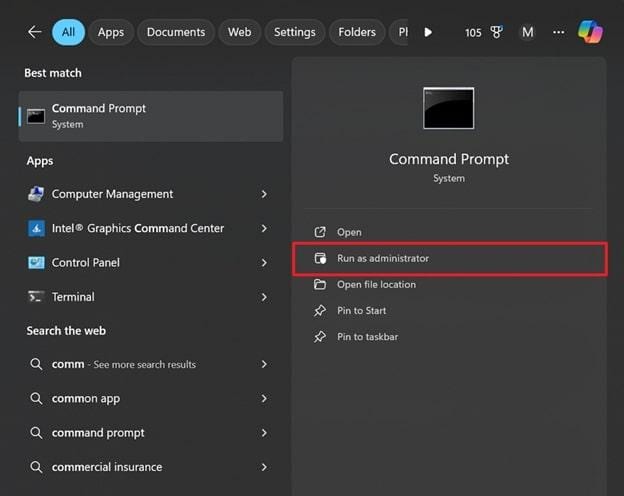
Step 2. Moving ahead, input the “chkdsk e: /f” command and press the “Enter” key to run the task.
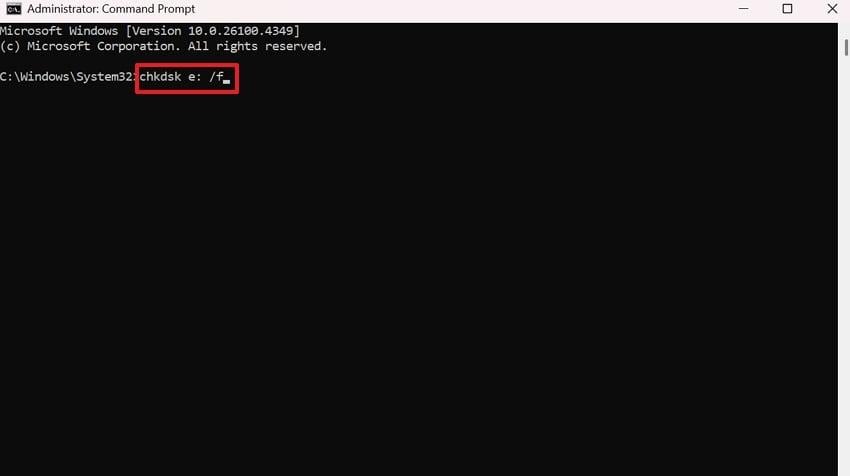
Method 5. Use the Windows Memory Diagnostic Tool
While exploring the fixes, remember that your computer’s memory helps run programs and open files without delays or loading errors. When memory has problems, it can lead to issues like the explorer.exe stopped working during regular tasks.
This is where the Windows Memory Diagnostic Tool checks your RAM for errors and reports any faults clearly. So, take guidance from the steps below to run this diagnostic tool on your system:
Step 1. Start the task by pressing both the “Windows Key + R” simultaneously to access the “Run” dialogue box. After that, type the “mdsched” command and hit either the “OK” or “Enter” key.
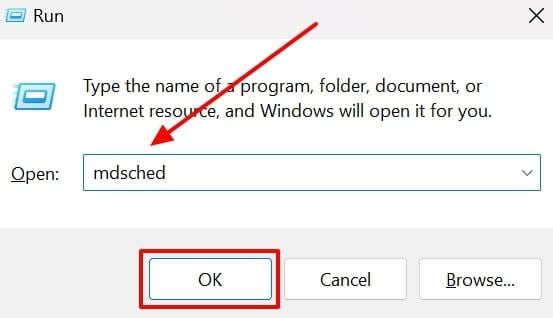
Step 2. Subsequently, opt for the “Restart Now and Check For Problems” option and let the tool check for errors on your system.
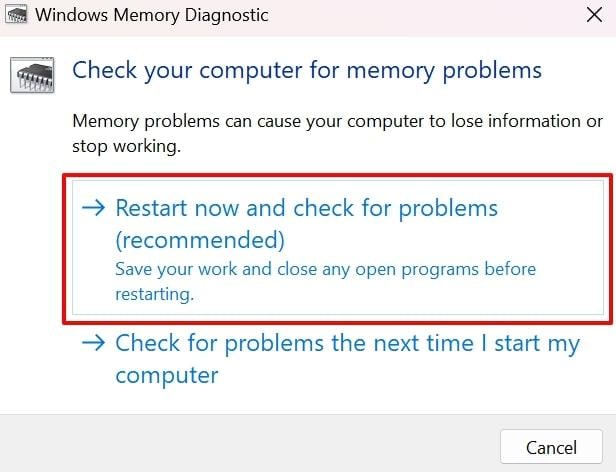
Method 6. Delete File Explorer History
File Explorer saves your recent activity to load folders faster and remembers your commonly used paths. Over time, this history can become too large or corrupted, causing errors like the desktop window manager has stopped working unexpectedly.
Here, it is recommended to clear its history to remove old or broken entries and refresh performance. Anyhow, head to the steps to understand how to remove the File Explorer:
Step 1. To inaugurate, head to the “Control Panel” and click the “File Explorer Options” choice.
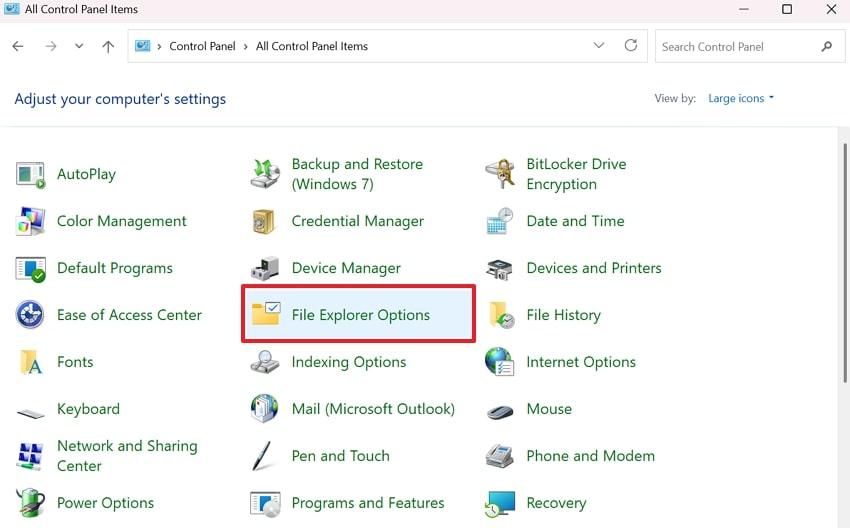
Step 2. Moving ahead, press the “Clear” button under the “Privacy” section and then hit the “OK” button.
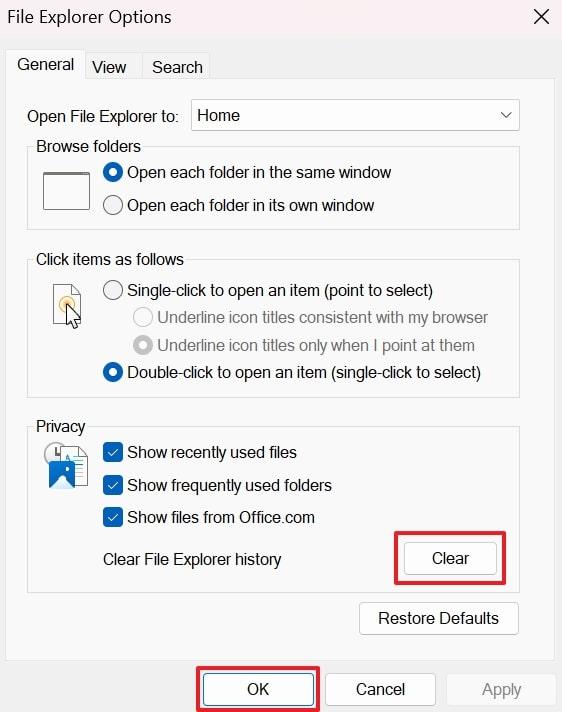
Method 7. Use Command Prompt to Restart Explorer.exe
In case the “explorer.exe has stopped working” error still appears, restarting it manually can refresh your desktop and taskbar instantly. This is where using Command Prompt lets you stop and start File Explorer without restarting your whole system.
It is also helpful when your screen freezes or icons disappear suddenly. Hence, adhere to the guide given to restart your File Explorer manually with the help of CMD:
Step 1. As you launch CMD, input the “taskkill /f / imexplorer.exe” command and hit the “Enter” key.
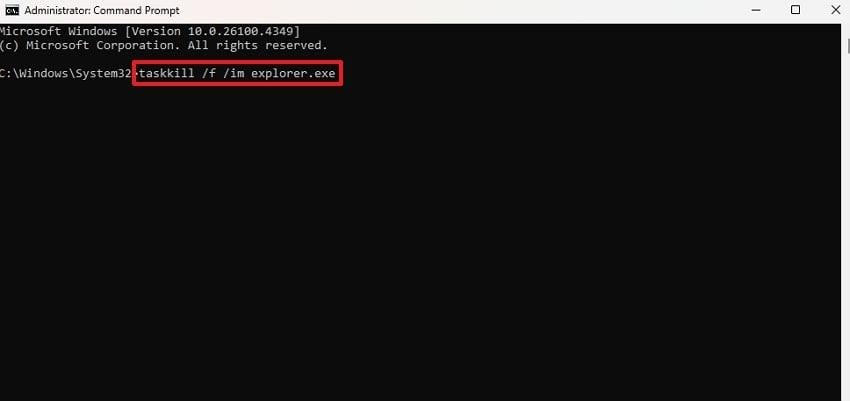
Step 2. Going ahead, type the “start explorer.exe” command to restart it and resolve the dilemma.
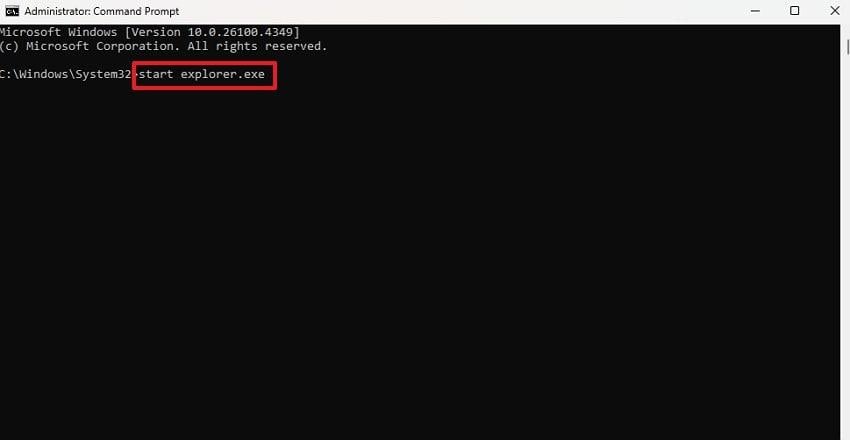
Method 8. Boot Into Safe Mode to Check Startup Issues
Booting into Safe Mode basically runs Windows with only basic files without any external apps or services. This helps remove problems that can trigger errors like .exe has stopped working during normal system startup.
Plus, it allows users to test performance without extra software interfering in the background. Anyhow, take guidance and find out how you can boot your system into safe mode to check startup issues:
Step 1. Commence the task by clicking the “Start” menu and pressing the “Power” icon to hold the "Shift” key and opt for the “Restart” option. Afterward, press the “Troubleshoot” option when you enter the Windows Recovery Settings.
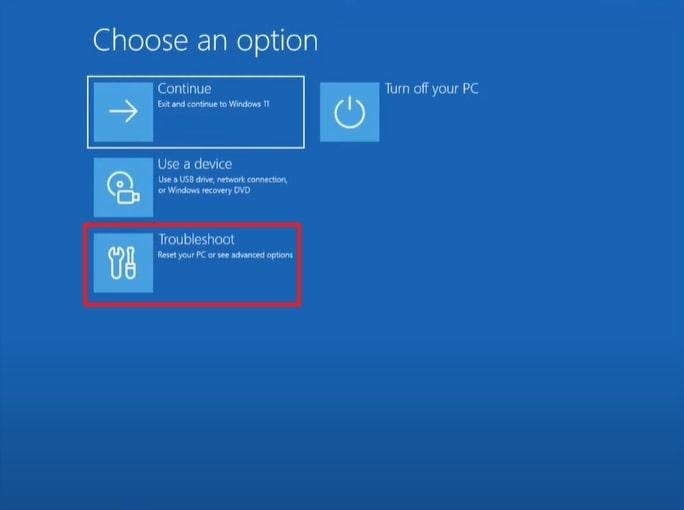
Step 2. Going ahead, choose “Advanced Options” and click the “Startup Settings” choice.
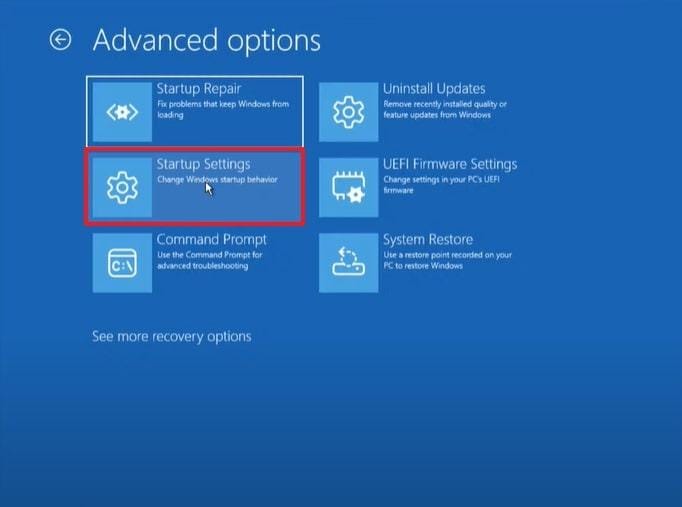
Step 3. Upon doing this, hit the “Restart” button and then press the “F4” key to boot your system into safe mode.
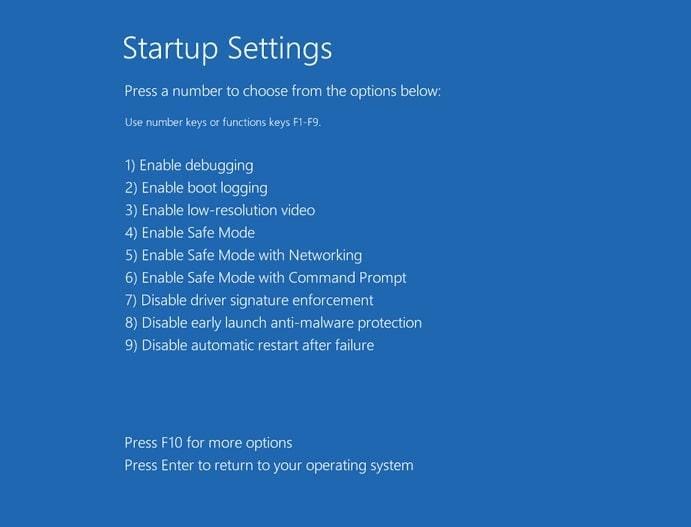
Step 4. Following this, press “Windows Key + R” at once to type “msconfig” and press the “OK” button.
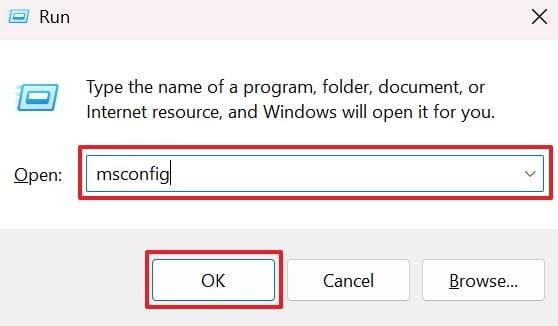
Step 5. Moving ahead, go to the “Services” tab and enable the “Hide All Microsoft Services” option. Next, click the “Disable All” and then the “OK” button when all the services are disabled.
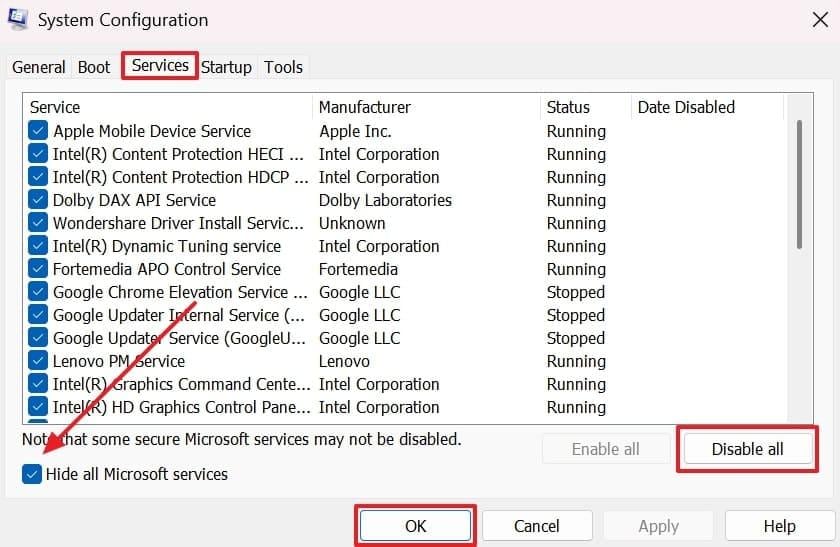
Part 3. Dealing with Increased File Corruption on Your Computer
Beyond resolving the explorer.exe stopped working problem, many users face an issue where their EXE files become corrupted and are unable to open. It usually occurs when files are saved or opened, due to power outages or system crashes. At this point, you can opt for Repairit File Repair, which offers both offline and online versions to repair broken or corrupted files without any hassle.
This powerful EXE repair tool is designed to fix broken or unresponsive Windows executable files without altering their original structure. Whether the EXE file won’t open, crashes on startup, or shows unexpected errors, the software can safely repair it while preserving the file’s core functionality. It works seamlessly on Windows systems and supports batch repair, letting you fix multiple EXE files at once. You can even preview basic file behavior before saving the repaired version.
After exploring the best tool, adhere to the detailed guide below and effortlessly repair your corrupted files:
Step 1. When you run this file repair software, go to the “More Types Repair” section and choose the “Document Repair” feature by pressing the “Start” button.
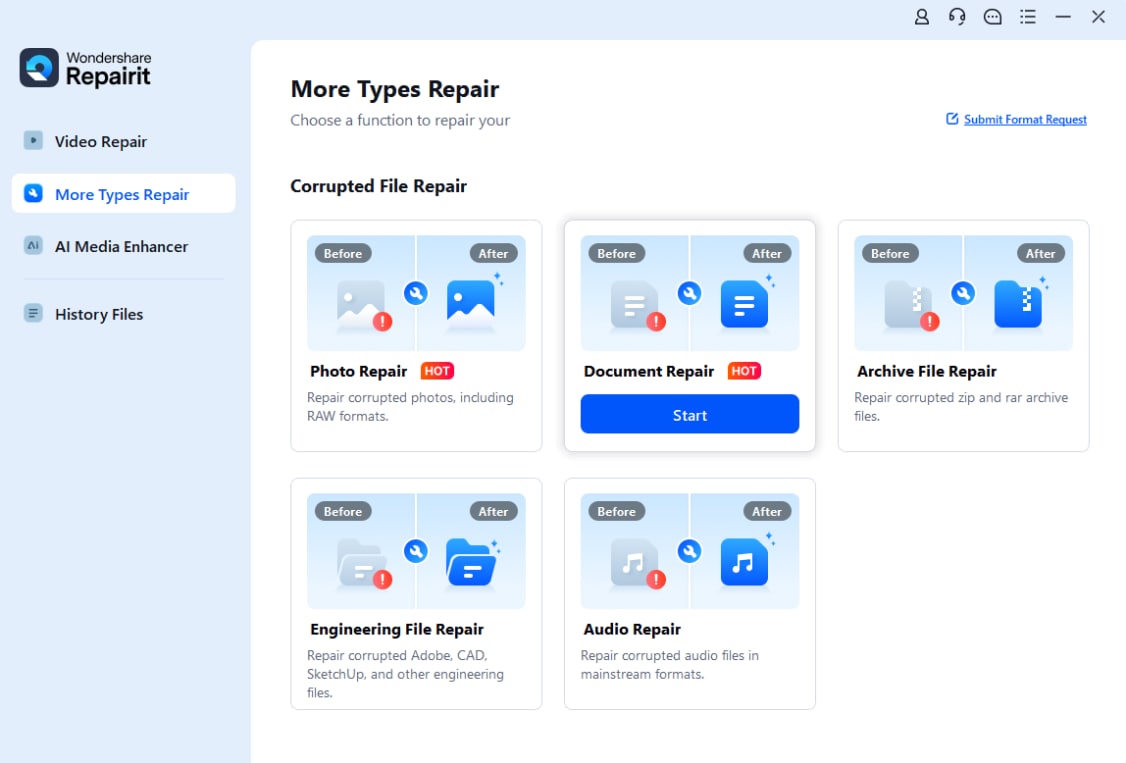
Step 2. As you see the next screen, press the “+Add” button to import all the corrupted files. Upon seeing it in the “Unrepaired Files” tab, press the “Repair” button.
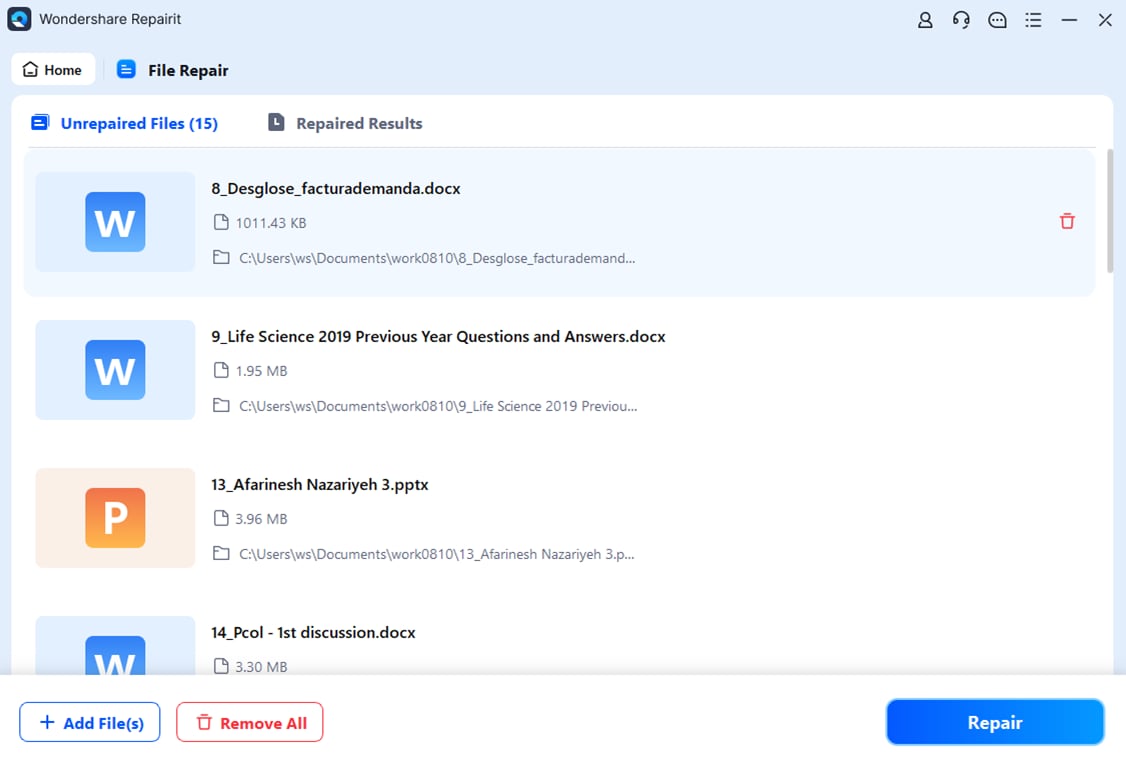
Step 3. As the procedure finishes, you can check the result by hitting the “Preview” button next to each file. Moving ahead, click both the “Save All” and “Save” buttons to export these files.
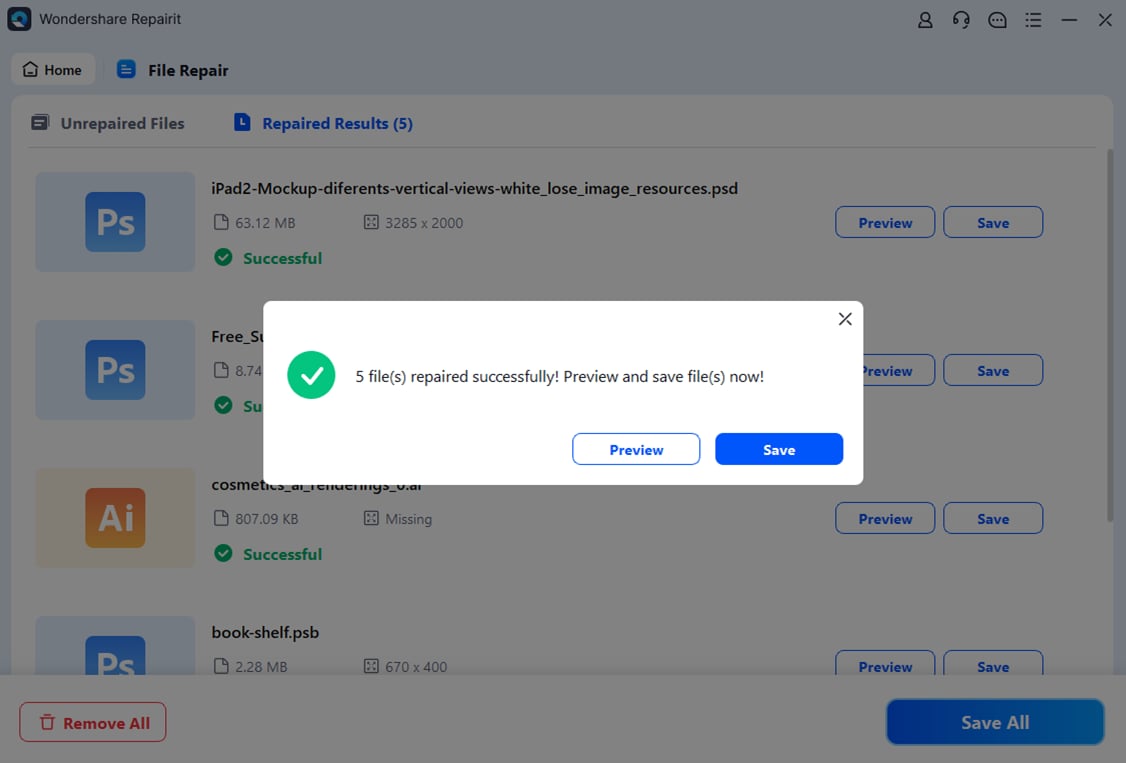
Fix Damaged EXE Files on Your Computer

Conclusion
In conclusion, the explorer.exe has stopped working error can disturb your workflow and affect your system’s overall performance. Fortunately, this article has explored several quick and advanced solutions that help you resolve this problem.
Besides this dilemma, if you also face the file corruption issue, which prevents you from opening, you can try Repairit. This robust data recovery software can fix 30 + file formats without even altering the original content and layout.
Frequently Asked Questions
-
Q1. What should I do if Explorer.exe crashes only when opening a specific folder?
When it crashes on a specific folder, it could be due to a corrupt file or a preview thumbnail. In such cases, you need to disable thumbnails to reduce loading stress and prevent instant crashes. Apart from that, you can move suspicious files to another location and try accessing the folder again without thumbnails enabled. -
Q2. Can Windows registry errors cause the “Explorer.exe has stopped working” issue?
Yes, broken or misconfigured registry entries linked to File Explorer can trigger explorer.exe crashes. This is especially true if you've used registry cleaners or edited the registry without proper backup. At this point, you can try the "sfc /scannow" command to repair files and address this problem. -
Q3. How can I repair documents that won’t open on my computer?
In case documents refuse to open, they have usually been damaged during a failed file operation. To address this problem, you can opt for Repairit, which supports over 30 formats to repair files effortlessly. Along with that, it lets you fix multiple unopenable documents at once while preserving your original content.

![How to Fix the Explorer.exe Has Stopped Working Error [Ultimate Guide]](https://images.wondershare.com/repairit/article-trans-image/1044/explorer-exe-has-stopped-working-1.jpg)
 ChatGPT
ChatGPT
 Perplexity
Perplexity
 Google AI Mode
Google AI Mode
 Grok
Grok

